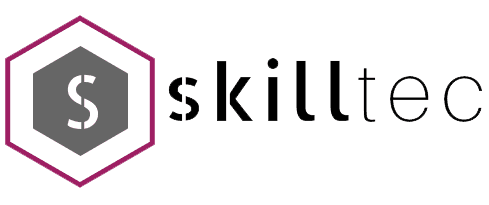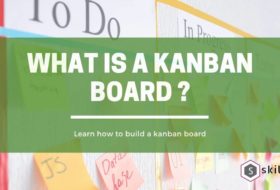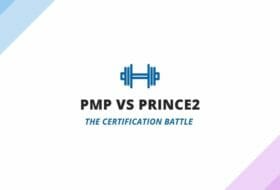Sprint planning is at the heart of success for Scrum projects. Being a form of Agile methodology—an iterative model of development—the effective planning of sprints is what separates this method from others like a waterfall, prototyping, etc. Ideally, the efficient completion of sprints results in the creation of deliverables at regular intervals that can then be provided to clients. This is especially beneficial if the requirements of a project are continually evolving and changing over time, and is one of the many big advantages of the Scrum framework.
But what is a sprint? A sprint is a timed iteration in a continuous development cycle and usually extends to 30 days at the most. Carefully planning sprints is essential in obtaining a deliverable that meets the client’s needs while staying within the decided timeframe and incorporating the best Agile development practices. This article discusses how you can get the most out of your sprints through effective planning, and lays out everything you need to know about sprints and sprint meetings in Agile methodologies.
Setting A Sprint Goal
The sprint goal, as the name suggests, is the desired objective to be achieved at the end of a sprint. These goals are discussed and negotiated by all those involved in the sprint itself, such as the product owner, scrum master, and the scrum team. When planning a sprint goal, it is of utmost importance that an achievable goal is agreed upon. Also, it is important for all the stakeholders to arrive at a definite plan regarding how this goal is to be achieved. These are the two parts of a typical sprint planning meeting, during which the sprint goal is decided.
Who is Involved In Sprint Planning?
Three entities are central to sprint planning: the product owner, scrum master, and the scrum team.
The product owner is the person who ‘owns’ the end-product that is created at the end of a sprint and is responsible for translating their vision for the product into a finished deliverable.
The scrum master is a member of the team who primarily acts as a facilitator at both sprint meetings and in the process of development. They ensure that fair agile practices are being adopted in the development of the product. While some are certified scrum masters, not having one may or may not be a dealbreaker for most interviewers.
Lastly, the scrum team determines the list of backlog items, or desired functionalities in the product, that can be completed and fulfilled by the end of the sprint. This avoids missed deadlines and is key to setting an optimal sprint goal.
How Do You Plan it Effectively?
1. Why is Sprint Planning Meeting Required?
Sprint planning meetings set the tone for all the work that is performed in a particular sprint. These sessions contextualize the work of past sprints with respect to future ones to ensure timely delivery of all end-products. They also make it clear to all those involved the expectations from the final product, and the procedures that will be employed to achieve them.
2. Involve the Team
Dysfunctional sprint meetings most commonly result from dissatisfied teams who feel excluded from the process of planning. This is where the scrum master must step in and exercise his influence to involve all members of the team to include them and their skill sets in a mutually beneficial way.
3. Use Inputs From Previous Sprints
If this isn’t the first sprint in the process of development, feedback from the previous sprints can help a team repeat and avoid past mistakes for seamless and smoother development. The past sprint reviews and sprint retrospectives are immensely useful here.
4. Ensure the Availability of Your Team
This point is especially relevant at times of the year when holiday seasons are approaching, rendering team members unavailable for significant portions of the sprint.
5. Update Your User Stories
Grooming your user stories along with the backlog is a great way to see your project from the perspective of the potential end-user, and the difficulties they might face in using your product.
6. Realistically Assess Story Points
Story points are abstract estimations of how difficult actualizing a particular user story is depending on the composition of your scrum team. You can use this to gauge your velocity as well.
7. Break Stories Down Into Tasks
Many find it useful to translate stories into tasks, which in turn helps them estimate how long it would take them to complete it. The tasks have to be broken down into meaningful activities to communicate the real goal. The tasks should be outlined in such a way that it is easy to tick off the activities completed.
8. Time Your Meetings Effectively
Restrict your planning meetings to 8 hours divided over 30 days for a month-long sprint. For shorter ones, you should adjust the time accordingly. Here the entire team commits to perform their set of activities to achieve the end product to be presented in the market.
9. Clearly Define What It Means For the Project to Be ‘Done’
This must be done with all three cogs of a sprint planning meeting, working together to determine the exact requisites that need to be met for the sprint to be successful.
10. Spell Out All Acronyms At The Start of Your Documents
This is a relatively unknown but immensely useful way of saving time at meetings by avoiding re-explaining things in case some team members are unaware of particular references.
The Challenges of Sprint Planning Meetings
As you can conclude from the previous sections, navigating the world of Scrum projects can be an arduous and daunting task for newcomers and veterans alike. If you’re looking for some help in this area, we offer an Agile and Scrum Foundation course and also have something for those looking for a broader insight into the LEAN agile Mindset.
This article has attempted to lay down the tenets of sprint planning meetings, and the way this fits into a sprint at large. It has also laid out ten tips to help you plan your next meeting successfully, along with some ideas to procure additional help on the matter.
If you’d like to learn more about Agile methodology, you can enroll for the exclusive SCRUM Agile Master Certified program, that will introduce you to the best practices of Agile and the nuances of the Scrum methodology.








